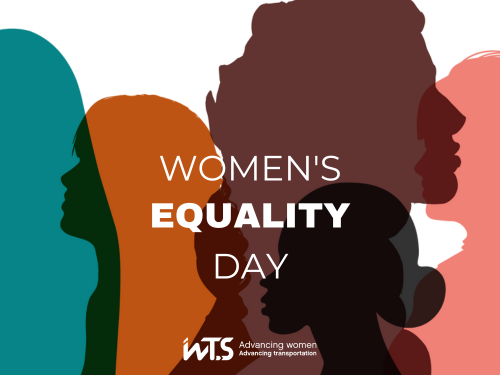Today is the 26th of August, another ordinary day for most of us but if you Google it, today is Women’s Equality Day. Why do women need a day to be equal? That’s most of the readers’ first question. Men are men and women are women. They are not equal and they shouldn’t be equal. That is what our conservative yet not-so-conservative society thinks. So why equal? Why is there a day to celebrate being equal? Give me some of your time and I’ll give answers to all your questions.
Since the beginning of time, women have fought against gender inequality. It is decent human nature to expect fair treatment despite gender, social status, or any other matter. Equality is a social, economic, and political necessity and women seek that.
All citizens have the right to vote, which is the foundation of democracy, but this wasn’t always the case. Up until recently, the majority of nations would not allow women, who make up 50% of the population, to vote. In the early 19th century, women began to raise their voices for the right to vote. As a result, the Nineteenth Amendment was adopted in the 1920s in the United States. The federal government and states were prohibited by this legislation from restricting people’s ability to vote based on their sex. Simply means that everyone was able to vote regardless of gender. Bainbridge Colby, who was the Secretary of State at that time, signed the proclamation on the 26th of August and hence the 26th of August became Women’s Equality Day to commemorate the victory, though it was first celebrated in 1973.
In 1920, the day stood as a result of 72 years of campaigning by a huge, peaceful civil rights’ movement by women. It had its formal beginnings in 1848 at the world’s first women’s rights convention, in Seneca Falla, New York. Before movements like these, even renowned philosophers like Rousseau and Kant believed that women’s inferior standing in society was quite logical and acceptable; women were ‘beautiful’ and ‘not fit for serious jobs’.
Over the last century, great women have proved these views wrong as the world has witnessed what women are capable of. From Rosa Parks to Eleanor Roosevelt fighting against civil rights and equality to great scientists such as Marie Curie (the first woman to win a Nobel Prize and also the only person to win Nobel Prizes in two sciences), Rosalind Franklin (contributions to the discovery of the molecular structure of DNA.) to Amelia Earhart (the first woman and second pilot ever to fly solo nonstop across the Atlantic), Valentina Tereshkova (the first woman in space) and to Mrs. Sirimavo Bandaranaike (the world’s first female prime minister) and in present Kamala Harris (the first woman and first woman of color to be appointed as the vice president of the united states.) The last century has shown, more than ever, what both women and men are capable of achieving, given the opportunity regardless of gender.
Women’s Equality Day now encompasses much more than just equal access to the vote. Organizations like Equality Now and Womankind Worldwide continue to fight for equal educational and employment opportunities for women around the world while also combating violence against women, discrimination against women, and stereotypes that persist in all societies.
The day also enables us, the younger generation, to remember the women who came before us and fought for equality. Women’s Equality Day is important. It serves to preserve the memory of the challenges our ancestors underwent as they created a better future and is a show of appreciation for their sacrifices, without which we would not be in the position we are in right now.
Women’s Equality Day is all about inspiring and empowering women and appreciating how far they’ve come defying all barriers. General customs include expressing gratitude to influential women in one’s life, supporting small-scale businesses run by women, and celebrating womanhood with your girl gang. Also, the hashtag #WomensEqualityDay will tell success stories on social media.
It is essential to not only celebrate the achievements but also to renew our commitment to creating an equitable future for all. As the first step, it’s essential to promote education that challenges gender roles as education is the key to everything. Through education, it is easy to break down stereotypes to foster respect. It is also a must to enforce policies that protect women’s rights. Even in the corporate field, it’s better to have a supportive work environment, equal wages, and diverse leadership roles that enable women to thrive.
Women’s Equality Day is a day to celebrate the advancements made while also serving as a reminder of the work still to be done. It’s a day set aside to remember the pioneers who paved the way for gender equality and to recognize the continuous work that must be done to build a society in which everyone, regardless of gender, may realize their full potential. Grassroots movements have been very strong in bringing about change, but we can be far more effective when everyone works together to support women’s rights and equality. In the fight for women’s equality, organizations like Amnesty International may function as a strong vanguard by working with local campaigners and activists.
References:
- Women’s Equality Day – National Women’s History Alliance. (2023, June 27). National Women’s History Alliance. https://nationalwomenshistoryalliance.org/resources/commemorations/womens-equality-day/#:~:text=The%20History%20of%20Women’s%20Equality,women%20the%20right%20to%20vote.
- Wilczek, P. (2023, August 11). Women’s Equality Day. National Today. https://nationaltoday.com/womens-equality-day/
- Days Of The Year. (2023, March 22). National Women’s Equality Day. Days of the Year. https://www.daysoftheyear.com/days/womens-equality-day/
Image Courtesy: https://bitly.ws/TbT2

